Unraveling the realm of poultry farming unveils a diverse array of turkey breeds, each unique in its potential for meat and egg production. In this comprehensive exploration, we delve into the top 20 turkey breeds, dissecting their attributes and suitability for the dual purpose of meat and egg farming. Prepare to embark on a journey through the avian kingdom, where science meets agriculture, to optimize your poultry endeavors.
Top 20 Best Turkey Breeds to Raise for Meat
Broad Breasted Bronze
This breed is similar to the Broad Breasted White, but it has bronze-colored feathers with black tips. It also grows fast and large, reaching up to 45 pounds for toms and 25 pounds for hens in 16 weeks. It has a rich flavor and a dark pinfeather pattern that gives it a distinctive appearance. Like the Broad Breasted White, this breed cannot breed naturally and needs artificial insemination. It also needs a lot of feed and water, and it could be better at foraging or free-ranging.
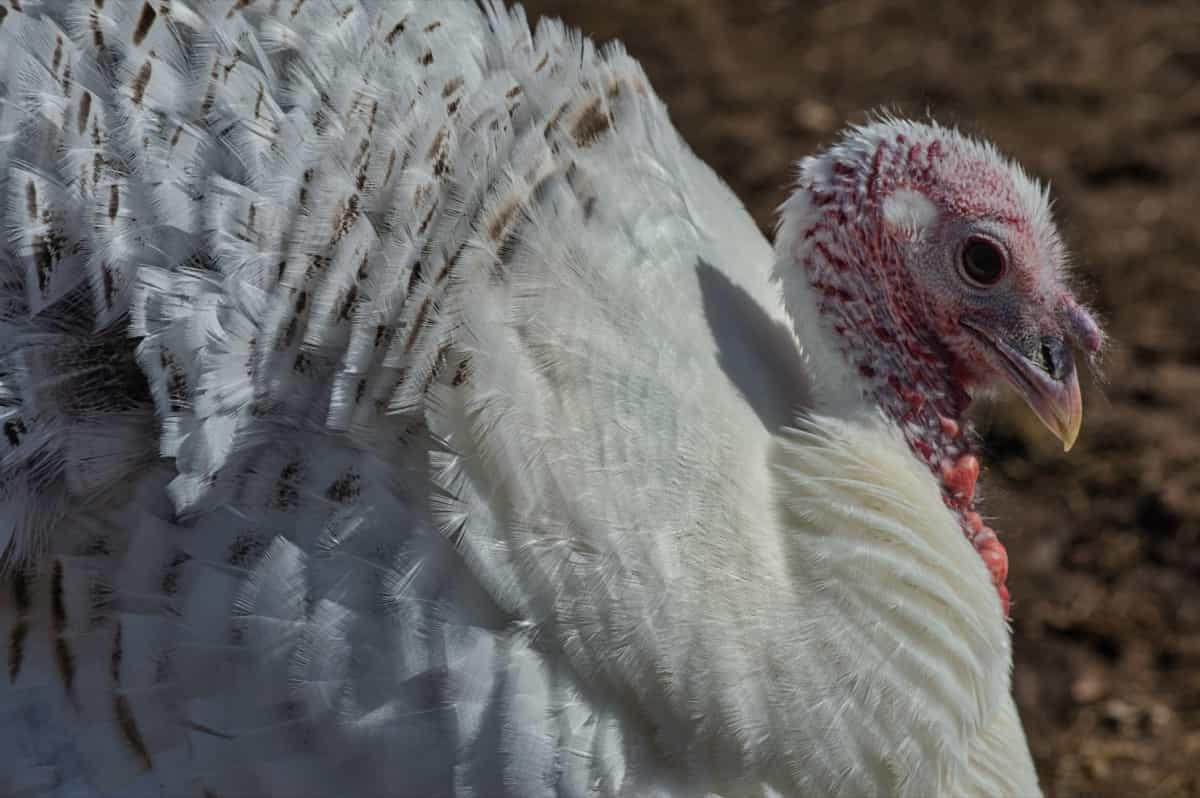
Broad Breasted White
This is the most popular turkey breed for meat production in the US and the world. It is a fast-growing breed that can reach up to 45 pounds for toms and 25 pounds for hens in 16 weeks. It has a large breast and white feathers that make plucking easy. However, this breed is not able to breed naturally due to its size and weight, and it requires artificial insemination. It also needs plenty of feed and water, and it could be better at foraging or free-ranging.
White Holland
This is a heritage turkey breed that originated in Europe and was brought to America by early settlers. It has pure white feathers and a classic turkey look. It is a medium-sized breed that can reach up to 25 pounds for toms and 16 pounds for hens in 24 weeks. It has a mild flavor and a clean carcass. Unlike the broad-breasted breeds, this breed can breed naturally, forage, and free-range well. However, it is rare and may be hard to find.
In case you missed it: Turkey Farming Business Plan: Cost and Profit Analysis
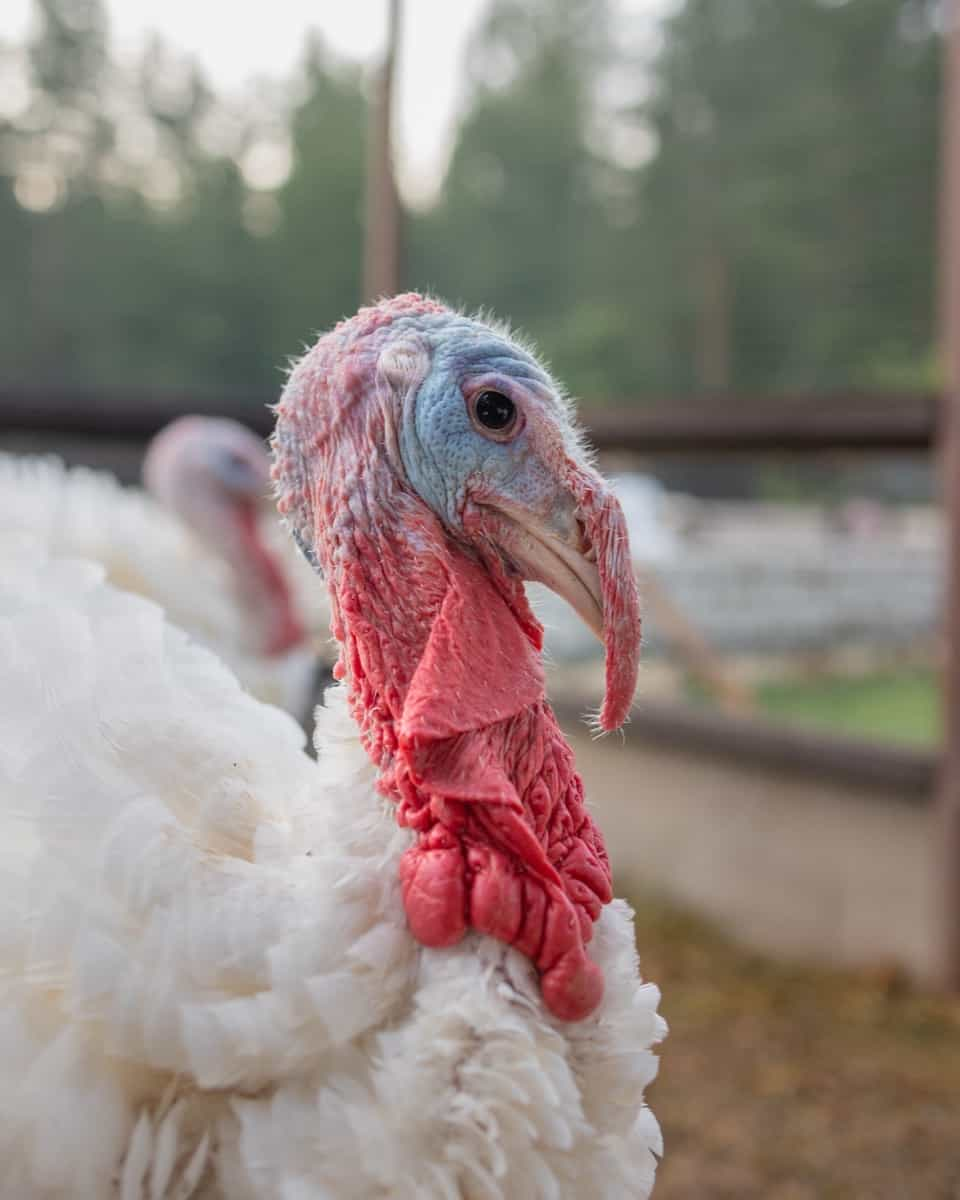
Narragansett
This is another heritage turkey breed that originated in America from crossing domestic turkeys with wild turkeys. It has black, gray, tan, and white feathers that give it a beautiful pattern. It is a medium-sized breed that can reach up to 23 pounds for toms and 14 pounds for hens in 24 weeks. It has a rich flavor and a dark pinfeather pattern that gives it a distinctive appearance. This breed can breed naturally and can forage and free-range well. It is also calm and friendly, making it a good choice for small farms.
In case you missed it: How to Start Organic Farming in Turkey: How to Start, A Step-By-Step Production Guide for Beginners
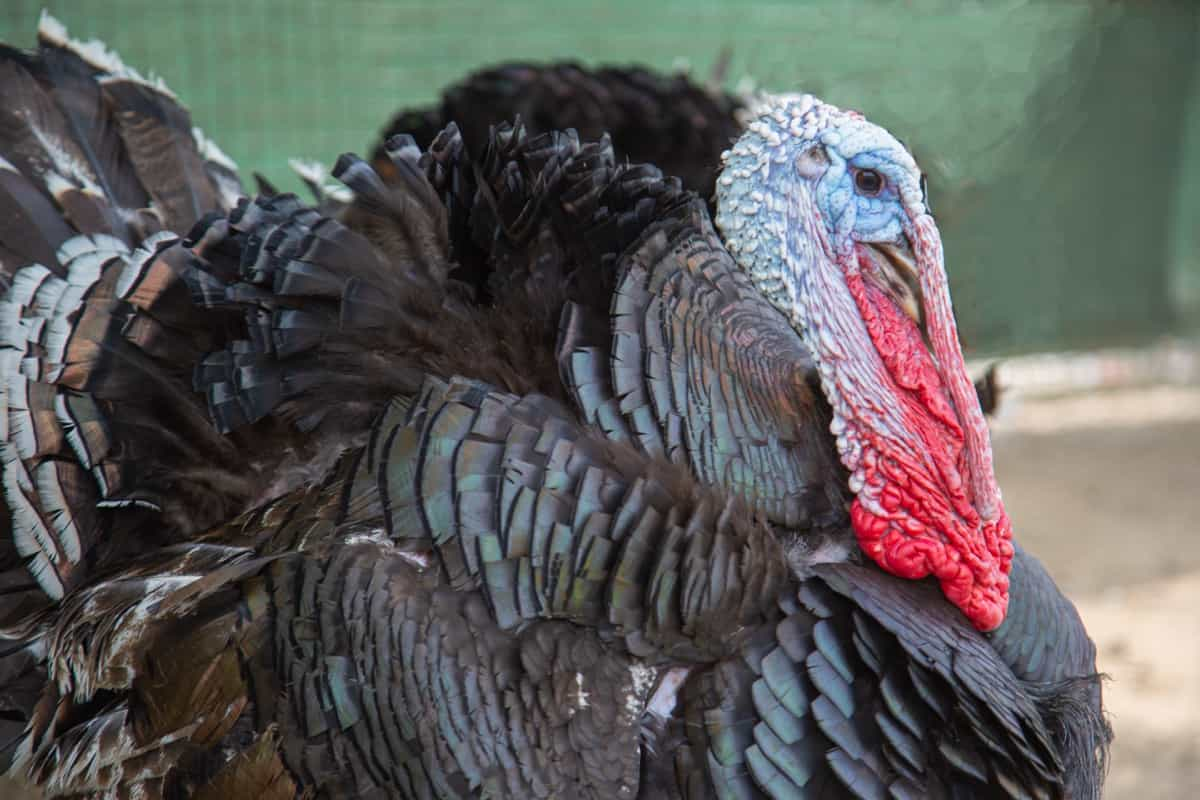
Bourbon Red
This is yet another heritage turkey breed that originated in America from crossing Bronze, Buff, and White Holland turkeys. It has reddish-brown feathers with white tips on the wings and tail. It is a medium-sized breed that can reach up to 23 pounds for toms and 14 pounds for hens in 24 weeks. It has a delicious flavor and a dark pinfeather pattern that gives it a distinctive appearance. This breed can breed naturally and can forage and free-range well. It is also beautiful and popular among small flock owners.
6oyal Palm
This is a rare turkey breed that originated in Florida from crossing Black, Bronze, Narragansett, and native turkeys. It has white feathers with black bands on the wings, tail, and back. It is a small-sized breed that can reach up to 16 pounds for toms and 10 pounds for hens in 24 weeks. It has a mild flavor and a clean carcass. This breed can breed naturally and can forage and free-range well. It is also active and flighty, making it a good choice for ornamental purposes.
Slate or Blue Slate
This is an old turkey breed that originated in Europe or America from crossing domestic turkeys with wild turkeys or Spanish Black turkeys. It has slate-blue or gray feathers with black spots or lacing. It is a medium-sized breed that can reach up to 23 pounds for toms and 14 pounds for hens in 24 weeks. It has a good flavor and a dark pinfeather pattern that gives it a distinctive appearance. This breed can breed naturally and can forage and free-range well. It is also hardy and adaptable, making it suitable for various climates.
Black Spanish
This is an ancient turkey breed that originated in Europe or Mexico from crossing domestic turkeys with wild turkeys or Aztec turkeys brought by Spanish explorers. It has black feathers with green or purple iridescence. It is a medium-sized breed that can reach up to 23 pounds for toms and 14 pounds for hens in 24 weeks. It has an excellent flavor and a dark pinfeather pattern that gives it a distinctive appearance. This breed can breed naturally and can forage and free-range well. It is also active and alert, making it a good choice for predator protection.
Beltsville Small White
This is a modern turkey breed that originated in America from crossing White Holland, Narragansett, Bronze, White Austrian, and wild turkeys. It has white feathers and a small to medium size. It can reach up to 17 pounds for toms and 10 pounds for hens in 16 weeks. It has a tender flavor and a clean carcass. This breed can breed naturally and can forage and free-range well. It is also friendly and docile, making it a good choice for pets or exhibitions.
In case you missed it: How to Start Greenhouse Farming in Turkey: Crops, Subsidy, and Loans
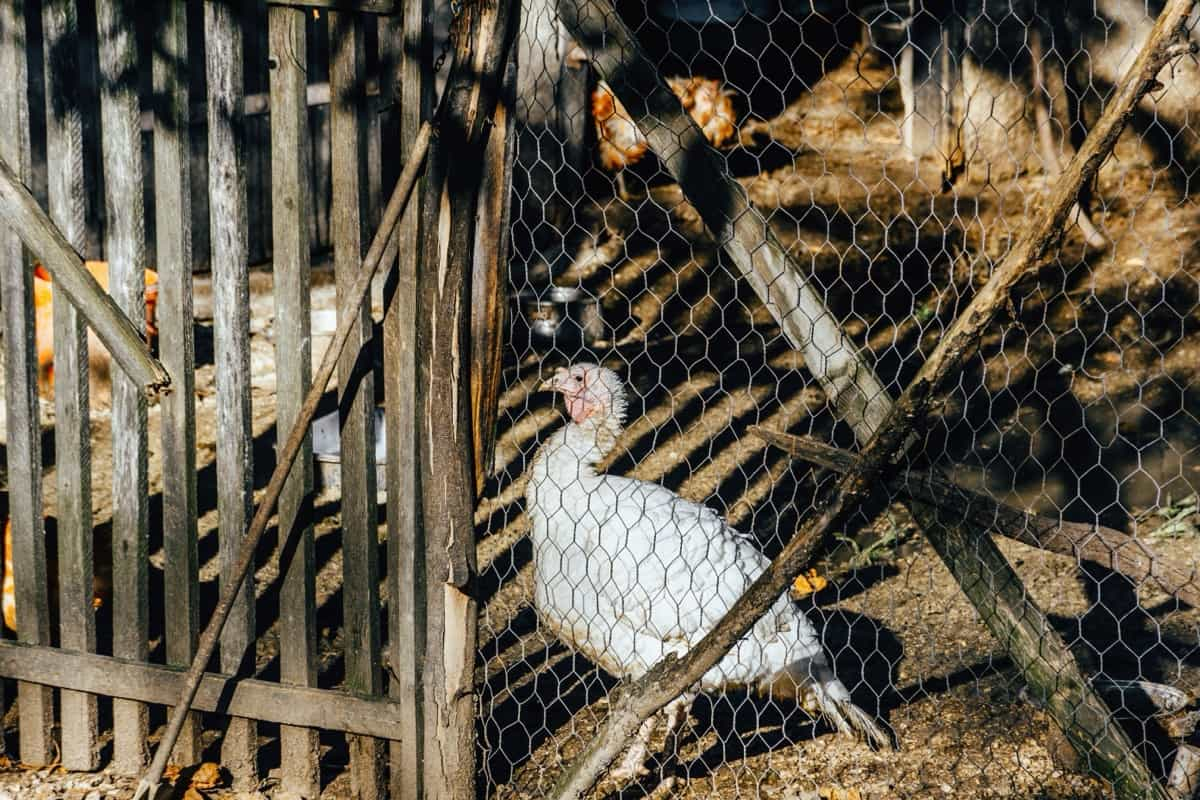
Midget White
This is a recent turkey breed that originated in America from crossing Broad Breasted White and Royal Palm turkeys. It has white feathers and is very small in size. It can reach up to 20 pounds for toms and 12 pounds for hens in 16 weeks. It has a mild flavor and a clean carcass. This breed can breed naturally and can forage and free-range well. It is also friendly and docile, making it a good choice for pets or exhibitions.
Top 5 Turkey Breeds for Eggs
Heritage Breeds (General)
Heritage turkeys are breeds that have been around for a long time and have yet to be altered by modern breeding practices. They are usually more hardy, active, and adaptable than commercial turkeys. They also have a richer flavor and texture of meat. Heritage turkeys can lay eggs for up to eight or nine years, but their production declines after the fourth year. Some of the best heritage breeds for eggs are Bourbon Red, Royal Palm, Narragansett, and Bronze.
Red Slate
Red Slate turkeys are a rare variety of heritage turkeys that originated in Vermont. They have a slate-gray body with red feathers on the neck, wings, and tail. They are medium-sized birds weighing about 23 pounds for males and 14 pounds for females. Red Slate turkeys are good foragers and can thrive on pasture. They are also calm and friendly birds that make good pets. Red Slate turkeys can lay about 80 to 100 eggs per year.
Jersey Buff
Jersey Buff turkeys are another rare heritage breed that originated in New Jersey. They have a buff-colored body with white feathers on the tail and wing tips. They are large birds, weighing about 33 pounds for males and 18 pounds for females. Jersey Buff turkeys are docile and gentle birds that can get along well with other poultry. They are also good mothers and can hatch their eggs. Jersey Buff turkeys can lay about 80 to 100 eggs per year.
In case you missed it: Pasture-Based Free-Range Chicken Farming: How to Implement for Improving Welfare and Quality
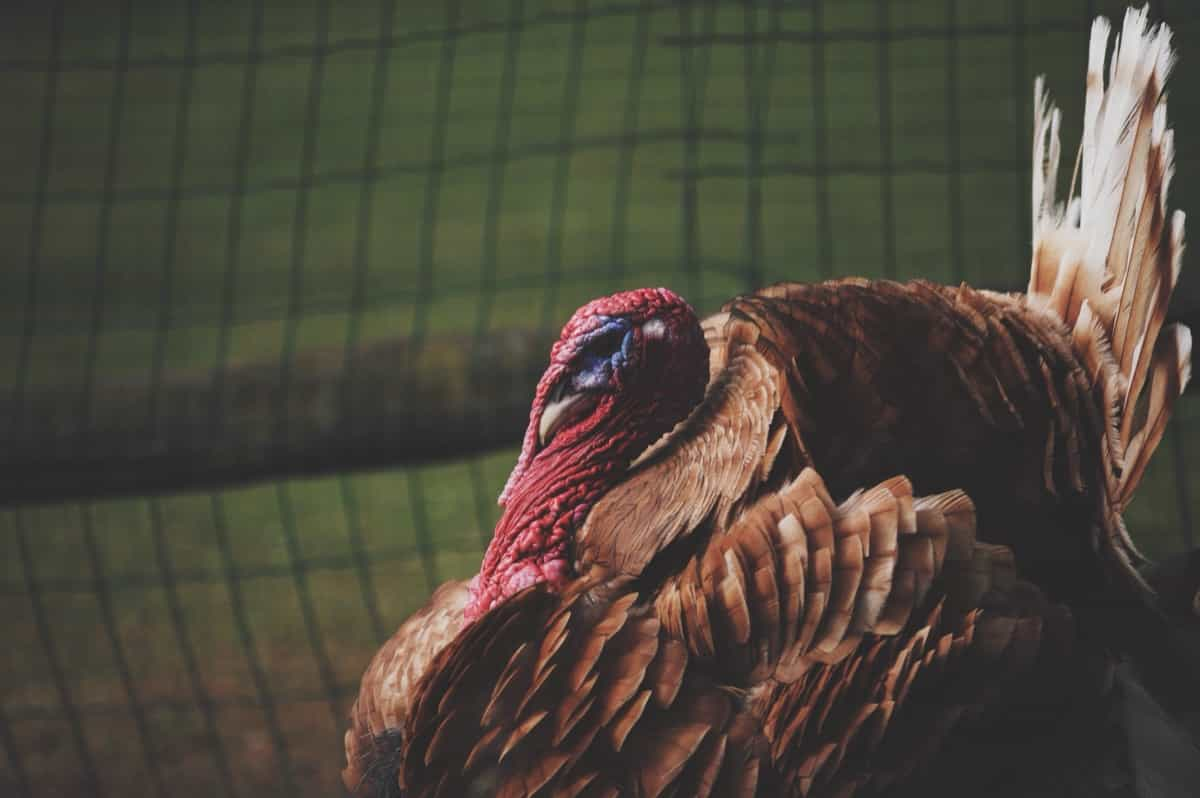
Chocolate Turkey
Chocolate turkeys are a color variation of the Black turkey, which is one of the oldest turkey breeds in America. They have a dark brown body with black feathers on the neck, wings, and tail. They are medium to large birds, weighing about 25 pounds for males and 16 pounds for females. Chocolate turkeys are active and curious birds that like to explore their surroundings. They are also good flyers and roosters. Chocolate turkeys can lay about 80 to 100 eggs per year.
Lavender Turkey
Lavender turkeys are a color variation of the Slate turkey, which is another old American breed. They have a light gray body with lavender feathers on the neck, wings, and tail. They are medium-sized birds weighing about 23 pounds for males and 14 pounds for females. Lavender turkeys are elegant and beautiful birds that can add some color to your flock. They are also good foragers and can adapt to different environments. Lavender turkeys can lay about 80 to 100 eggs per year.
Top 5 Dual-Purpose Turkey Breeds (Meat & Eggs)
Narragansett Turkeys
Narragansett turkeys are one of the oldest American breeds, dating back to colonial times. They have a black body with white bars on the wings and tail. They are large birds, weighing about 30 pounds for males and 18 pounds for females. Narragansett turkeys are excellent dual-purpose birds, as they produce both high-quality meat and eggs. They are also good mothers and can brood their eggs. Narragansett turkeys can lay about 50 to 100 eggs per year.
Bourbon Red Turkeys
Bourbon Red turkeys are another old American breed that originated in Kentucky and Pennsylvania. They have a reddish-brown body with white feathers on the tail and wing tips. They are large birds, weighing about 33 pounds for males and 18 pounds for females. Bourbon Red turkeys are also great dual-purpose birds, as they produce both flavorful meat and eggs. They are also hardy and active birds that can thrive on pasture. Bourbon Red turkeys can lay about 90 to 180 eggs per year.
Royal Palm Turkeys
Royal Palm turkeys are a British breed that was introduced to Florida in the 1920s. They have a white body with black bands on the wings and tail. They are small to medium-sized birds, weighing about 22 pounds for males and 12 pounds for females. Royal Palm turkeys are mainly raised for exhibition purposes, as they have a striking appearance. But they can also be raised for meat and eggs, as they have lean and tender meat and a good laying rate. Royal Palm turkeys can lay about 100 eggs per year.
In case you missed it: How to Manage Chicken Feed Costs: Economic Strategies for Nutritious Poultry Diets
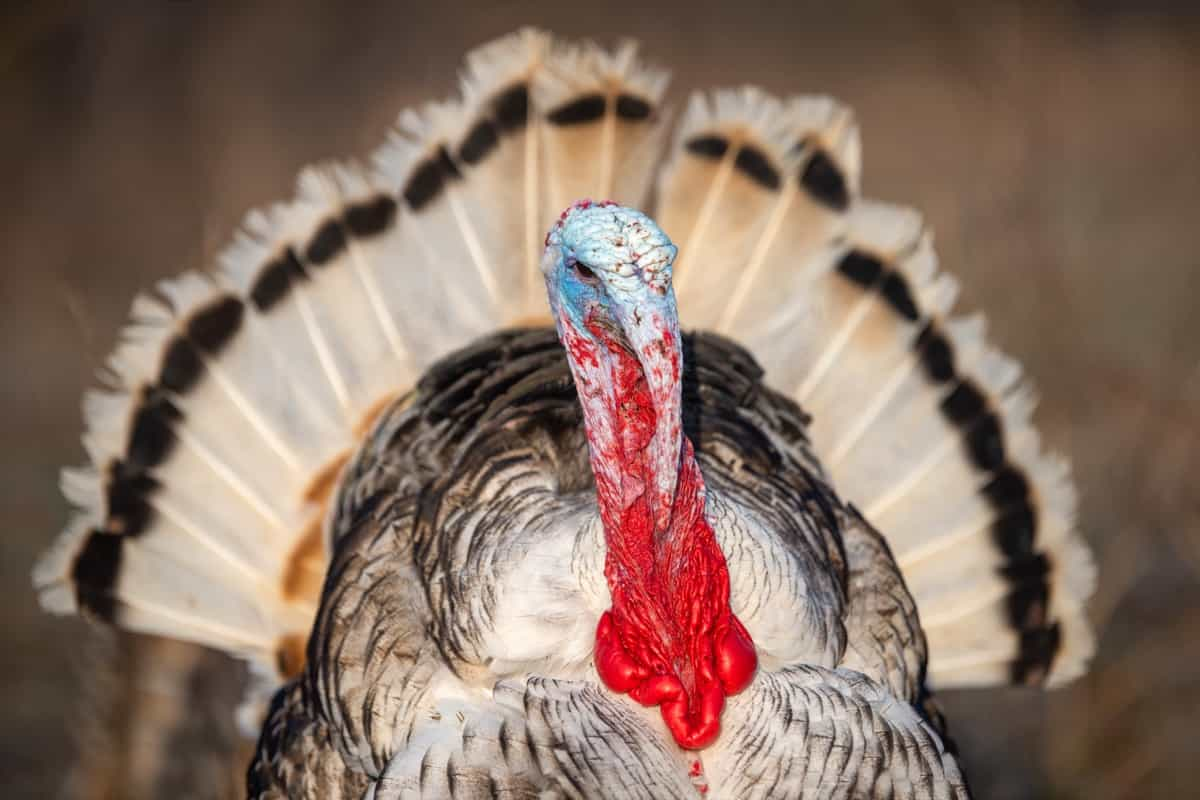
Bronze Turkey
Bronze turkeys are a cross between domesticated and wild turkeys, resulting in a large and robust breed. They have a bronze-colored body with black feathers on the neck, wings, and tail. They are very large birds, weighing about 36 pounds males and 20 pounds females. Bronze turkeys are popular meat birds, as they have rich and succulent meat. They can also produce a decent number of eggs, especially if they are kept under artificial lighting. Bronze turkeys can lay about 80 to 100 eggs per year.
Beltsville White
Beltsville White turkeys are a modern breed that was developed in Maryland in the 1930s. They have a pure white body with no other markings. They are small to medium-sized birds, weighing about 17 pounds for males and 10 pounds for females. Beltsville White turkeys are ideal for small farms and backyards, as they are easy to manage and feed. They are also good dual-purpose birds, as they produce both tender meat and eggs. Beltsville White turkeys can lay about 150 to 180 eggs per year.
Conclusion
Selecting the right turkey breed is paramount for a successful venture into meat and egg production. With this insightful guide, you’re equipped to make informed decisions based on scientific considerations. Elevate your poultry farming with breeds tailored to meet your specific needs, ensuring a bountiful harvest and thriving flock.
- Types of Pesticides Used in Agriculture: A Beginner’s Guide
- Economical Aquaculture: A Guide to Low-Budget Fish Farming
- 15 Common Planting Errors That Can Doom Your Fruit Trees
- How to Make Houseplants Bushy: Effective Tips and Ideas
- Innovative Strategies for Boosting Coconut Pollination and Yield
- Pollination Strategies for Maximum Pumpkin Yield
- The Complete Guide to Chicken Fattening: Strategies for Maximum Growth
- Natural Solutions for Tulip Problems: 100% Effective Remedies for Leaf and Bulb-Related Issues
- Revolutionizing Citrus Preservation: Towards a Healthier, Greener Future
- Natural Solutions for Peony Leaf and Flower Problems: 100% Effective Remedies
- Maximizing Profits with Avocado Contract Farming in India: A Comprehensive Guide
- Natural Solutions for Hydrangea Problems: 100% Effective Remedies for Leaf and Flowers
- The Ultimate Guide to Choosing the Perfect Foliage Friend: Bringing Life Indoors
- From Sunlight to Sustainability: 15 Ways to Use Solar Technology in Agriculture
- The Ultimate Guide to Dong Tao Chicken: Exploring from History to Raising
- The Eco-Friendly Makeover: How to Convert Your Unused Swimming Pool into a Fish Pond
- Mastering the Art of Delaware Chicken Farming: Essentials for Healthy Backyard Flocks
- 20 Best Homemade Fertilizers for Money Plant: DIY Recipes and Application Methods
- How to Craft a Comprehensive Free-Range Chicken Farming Business Plan
- Brighten Your Flock: Raising Easter Egger Chickens for Beauty and Bounty
- How to Optimize Your Poultry Egg Farm Business Plan with These Strategies
- Subsidy for Spirulina Cultivation: How Indian Government Schemes Encouraging Spirulina Farmers
- Ultimate Guide to Raising Dominique Chickens: Breeding, Feeding, Egg-Production, and Care
- Mastering the Art of Raising Jersey Giant Chickens: Care, Feeding, and More
- Ultimate Guide to Raising Legbar Chickens: Breeding, Farming Practices, Diet, Egg-Production
- How to Raise Welsummer Chickens: A Comprehensive Guide for Beginners
- How to Protect Indoor Plants in Winter: A Comprehensive Guide
- Ultimate Guide to Grow Bag Gardening: Tips, Tricks, and Planting Ideas for Urban Gardeners
- Guide to Lotus Cultivation: How to Propagate, Plant, Grow, Care, Cost, and Profit
- Agriculture Drone Subsidy Scheme: Government Kisan Subsidy, License, and How to Apply Online
- Ultimate Guide to Raising Araucana Chickens: Breed Profile, Farming Economics, Diet, and Care
- Bringing Hydroponics to Classroom: Importance, Benefits of Learning for School Students
- Ultimate Guide to Raising Polish Chickens: Breed Profile, Farming Economics, Diet, and Care
- Ultimate Guide to Raising Australorp Chickens: Profile, Farming Economics, Egg Production, Diet, and Care
- Silkie Chicken Farming: Raising Practices, Varieties, Egg Production, Diet, and Care
- Sussex Chicken Farming: Raising Practices, Varieties, Egg Production, Diet and Care